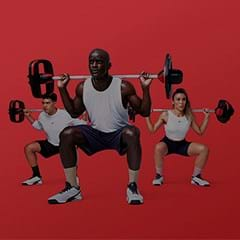10 years of research shows four minutes of exercise can hit the spot

Good news for those who struggle to find time to work out. Scientists have collated a decade’s worth of research to confirm that even the shortest bursts of exercise can really benefit your health. This research review highlights how, in considerably less time, low volume HIIT can create health benefits that are on par with those stimulated by the current WHO physical activity guidelines (which recommend 150-300 minutes of moderate activity a week or 75-100 minutes of vigorous activity a week). While low volume HIIT typically involves less than 20 minutes total exercise time, the benefits can be enjoyed in as little as four minutes! One of the studies included in the review showed that four minutes of HIIT three times per week for 12 weeks significantly improved blood sugar levels and cardiorespiratory fitness in adults with type 2 diabetes, while reducing the amount of fat in the liver. These improvements were comparable to 45-minute sessions of moderate-intensity aerobic exercise three times per week.
Evening exercise is better for metabolic health

Australian scientists have shown that exercise late in the day can stimulate greater health benefits than exercise in the morning – particularly for mitigating the effects of an unhealthy diet. While many past studies have explored the optimal time for exercise, most have not taken into account diet as well. For this study, researchers worked with sedentary, overweight men, who were fed a high-fat diet for five days. During this time, some men completed cycle workouts in the morning, some did so in the evening, and some stayed sedentary as a control group. After retesting their aerobic fitness, cholesterol, blood-sugar control and other aspects of health, the researchers found that regardless of when the study participants exercised, they enjoyed similar improvements in cardio fitness. However, those who exercised later in the day also saw lower cholesterol levels, better blood-sugar control, and improved cardiovascular molecular patterns in their bloodstreams – all important markers for improved metabolic health. You can read more about finding the best time to work out here.
The online game that’s good for your diet

Forget Candy Crush or Fortnite, there’s a new online game on the scene – and it could help you cut back on junk food and lose weight. The FoodT app has been designed to alter implicit food biases, as users are encouraged to tap on images of healthy foods, but stop when they see unhealthy snacks – which creates an association between these foods and stopping. A 4-week study of 1,234 users suggests it works. Over 40 percent of users adhered to the 10 recommended sessions and participants who used the app more frequently reported larger reductions of unhealthy food intake and larger increases in healthy food intake. Participants saw an average weight loss of half a kilogram (just over a pound) and a small increase in the amount of healthy food they ate. “As an example, someone who ate each item of junk food two to four times a week reduced this to once a week after using the app regularly for a month,” said Professor Natalia Lawrence, of the University of Exeter. It’s worth noting that the researchers say the findings should be interpreted cautiously, as the study didn't involve a control group, and there may have been other contributors which helped generate weight loss.
Light intensity activity stacks up for a lifetime of good health

Right now a massive 200 million people are dealing with peripheral artery disease (PAD), and many of these sufferers also develop something called claudication. Claudication is a debilitating pain in the legs brought on by short periods of walking, and it also increases the risk of death from cardiovascular disease. Past research shows that exercise can improve claudication by delaying the development of leg pain, and medical professionals have begun prescribing exercise as a treatment. But it’s likely that the intensity of the recommended exercise programs limited how many people participated. Now, a new longitudinal study suggests that even light-intensity activity, such as walking or household chores, can be beneficial. The findings come after researchers tracked 386 people with PAD and claudication for 19 years, investigating whether physical activity levels were associated with mortality. They found that those who did light physical activity had 48 percent lower risk of all-cause mortality than those who were sedentary (and 49 percent lower risk of cardiovascular mortality). Those who did moderate-to-vigorous intensity physical activity had 57 percent lower risk of all-cause mortality (and 66 percent lower risk of cardiovascular mortality) than those who were sedentary. This makes it clear that any level of physical activity can create important life-improving health benefits.








